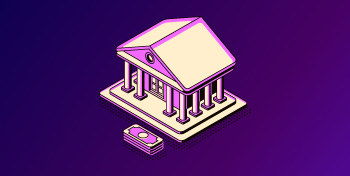2020 introduced the world to an extremely deadly pandemic, and at the same time spurred the growth of cryptocurrencies and blockchain. Some of the earliest examples of cryptocurrencies, as he tells us Coinmarketrate.com, such as Bitcoin, were created in the form of digital currencies. On the other hand, the latest innovations among cryptocurrencies were created to solve real problems.
The dispute between IOTA and IOTEX has become quite popular due to the growth of digital asset trading. These are examples of cryptocurrencies that find application in the real world. Both coins are excellent examples of solving real problems in specific industries, in particular, in the IoT industry.
IOTA has been the old guard since 2017, and IOTEX rapidly broke into the market in 2021, going from 100 million to 2.5 billion in November this year.
Interestingly, IOTA and IOTEX are important aspects of blockchain and IoT interaction. However, they have several differences among themselves in some factors, except that they are managed by different companies. Both of them also differ in terms of the rules for managing their networks.
The Growth of IoT and Blockchain Interaction
There is one of the main things that you need to understand before diving into a detailed understanding – the interaction of IoT and blockchain. You can find various types of solutions, including NFT, DeFi and Play-to-Earn games, developing in the field of blockchain. However, the competition for connecting the Internet of Things or IoT has recently been recognized as the most promising technological direction. Currently, only IOTEX has live working applications. The IOTA network is still at the testing stage when it comes to live projects.
Autonomous vehicles are a prime example. Although many people think that autonomous cars are cars that drive by themselves, in fact this concept refers to a connected set of cars with a single intelligence. All cars with the same software can learn from each other. As a result, it can be seen how connected intelligence and the network are a formidable tool for fighting the monopoly of large technology companies.
Connecting the dots for blockchain IoT interactions may seem like another innovative solution. Surprisingly, the interaction between them has opened up new opportunities, estimated in trillions of dollars. Most importantly, early investors are with the supporters of the winning network in the IOTA vs. IOTEX debate. Investors with plans for a long-term perspective will definitely consider the IoT platform as an important addition to the portfolio.
What is IOTA
IOTA is the past leader of the IoT Blockchain race, which can also be considered as a blockchain technology. In terms of market capitalization, the value of IOTA is almost $4.05 billion. Interestingly, during the peak of the 2017-18 season, it also successfully received a huge valuation of almost $15 billion. In fact, IOTA has taken a place in the top five among cryptocurrencies by market capitalization. But since then it has lost momentum due to lack of progress and repeated failures in the implementation of promised projects.
The most viable practice to achieve a huge market capitalization in 2017, was focused mainly on the development of consensus protocols. Ethereum’s scalability flaws provided an ideal opportunity for first-tier competitors to eliminate all inconsistencies.
Another important advantage of IOTA is the use of a directed acyclic graph or DAG. IOTA uses a DAG called Tangle, which can help process thousands of transactions in one second. As a result, it can include all IoT-based applications.
A directed acyclic graph or DAG is essentially a relational database that can be easily updated. Theoretically, you can update the database at lightning speed. However, the law of compensation in the cryptocurrency world directly points to the possibility of increased centralization with faster transactions.
IOTA has also had its share of setbacks, such as suspending the network for more than 20 days after a wallet hack in 2020. On top of that, IOTA has not been able to successfully fulfill its various promises: since 2017, the company has not fulfilled any promises, which led to its downfall. In 2020-2021, IOTA showed one of the worst results in the “bull run”, and dropped to the 50th place by market capitalization.
Will IOTA disappear
On the other hand, IOTA shows exceptional prospects. It showed promising prospects by launching her version 1.5. Previously, the network could process from 5 to 20 transactions per second. As a result, nodes running on older software may experience difficulties with more than 40 transactions per second.
The 1.5 network includes upgraded Hornet nodes, as well as improved algorithms for selecting milestones and selecting tips. In addition, the inclusion of a white flag along with these improvements has improved the network’s ability to manage more than 1,000 transactions per second. Although IOTA now seems to be the preferred choice in disputes between IOTEX and IOTA thanks to the 1.5 network, there is no compatibility with EVM in it (there are also no smart contracts in IOTA Mainnet). In addition, the 1.5 network lacks the aspect of decentralization, which is a huge problem for most external blockchain developers.
In the absence of competition, IOTA can take a calm approach to the development of IOTA 2.0. On the other hand, competition is the first reason why we are looking for differences between these projects.
What is IOTEX
The second participant in the debate – IOTEX, in fact, is a decentralized open source platform aimed at expanding the possibilities of an open economy for machines in the field of IoT. The main goal of IOTEX is to create an ecosystem that allows people and machines to interact on the basis of free will and guaranteed trust. Many people asking questions like “Is IOTA the same as IOTEX?” should know that IOTEX focuses more on real deployment. Without any marketing or statements about the speed of transactions, it is slowly developing in silence.
The two cutting-edge devices in IOTEX are the main points that set it apart in the debate. These two devices are Ucam and Pebble Tracker. Ucam is a home security camera that uses a private blockchain key, not a password to log in. Thus, the data collected by the device remains under the control of the device owner.
Pebble Tracker, on the other hand, is a universal hardware oracle that uses a security element to check sensor data. The security element in Pebble Tracker is a “black box” that can be found in the device processor or in the Trusted Execution Environment. You can connect sensor data directly to a smart contract without resorting to the services of third-party oracles such as Chainlink. Currently, one can only imagine the exceptional value of such real-world oracles in cryptocurrency.
You can also find answers to the question “Is IOTA the same as IOTEX?” thanks to the extensive ecosystem of DeFi and dApps. In addition, there is a perfectly optimized Uniswap-style exchange known as mimo. IOTEX has launched a new DApp called “StarCrazy”. At the same time, it has also contributed to the rapid growth of the third-party developer community, as well as dApps for the healthcare and gaming sector.
Is IOTEX the best alternative to IOTA
Although IOTEX offers a lot of new functionality along with the development of the DeFi and dApps sector, it is important to think about whether it is an alternative to IOTA. However, a fair comparison will show that IOTEX also has some disadvantages. For example, it has a long way to go in the matter of acceptance.
In addition, IOTEX requires a large number of devices => IoTeX, from zero devices connected to their platform to 10,000 in one year. IOTA has “zero” devices connected to their platform in one year. That’s what it would be fair to say before declaring a complete victory over IOTA in the case of real devices. On the other hand, it is also important to note that IOTEX is the first IOT blockchain to be listed on Coinbase. Therefore, it can be quite difficult to determine which one is better.
Differences between IOTA and IOTEX
If you want to find out which IoT blockchain platform is right for you, then you need to find the differences between them. Investors can look for specific factors in each platform to determine the ideal choice for their investment portfolio. Here are some of the important pointers of the differences between IOTA and IOTEX.
- Liquidity
Liquidity mainly refers to the ability to convert an asset into cash on demand. When comparing IOTA and IOTEX, preference is given to IOTEX. You can easily determine the liquidity in a particular crypto market by looking at the trading volume of platform tokens.
- Market rating
The next important factor of the difference between IOTA and IOTEX is their market capitalization or market rating. Market capitalization can also tell a lot about the possibilities of choosing IoT blockchain platforms. IOTA has an advantage over IOTEX in case of market capitalization.
IOTEX’s market capitalization is almost $1,219,389,715, compared to $4,054,652,679 of IOTA’s market capitalization. Currently, IOTA ranks 42nd among cryptocurrencies, while IOTEX is in 83rd place. However, before choosing an IoT blockchain platform, you should pay attention to such important indicators as the growth of market capitalization.
- Implementation levels
The debate between IOTA and IOTEX also takes into account the adoption levels of both blockchain networks. However, figuring out the exact level of cryptocurrency adoption may not be easy. In order to predict whether a coin has been rejected or accepted, you need knowledge.
IOTA is appreciated by many participants of the IoT landscape, while IOTEX also works quite efficiently. In addition, specific indicators such as performance and trading volume can be used to determine the acceptance or non-acceptance of cryptocurrencies. Performance and trading volume can also serve as proof of their use in projects outside and inside their own platforms.
- Recent performance trends
The performance of a crypto asset in the market is also one of the important factors for distinguishing them. You can find a suitable blockchain IoT platform only by checking how its coin behaves in the market.
- Market reputation
The reputation of the IoT blockchain platform is of great importance to investors before diving into it. Blockchain platforms with a bad reputation may not attract investors for their tokens. Therefore, it is very important in the cryptocurrency space, and is an important differentiator in the disputes between IOTEX and IOTA. You can track the reputation of the blockchain platform by studying its history and the latest performance trends.
First of all, the reputation of the teams puts both platforms in the same row. Since there are experienced and innovative teams behind each platform, it is quite difficult to distinguish them from each other based on the founders. However, when comparing IOTA and IOTEX, other factors may be taken into account to determine the reputation in the market. For example, IOTA uses a directed acyclic graph or DAG, known as Tangle, to connect smart IoT devices to cryptocurrency ecosystems.
On the other hand, IOTEX has also demonstrated favorable prospects in connecting IoT and blockchain, albeit at a slower pace. IOTA has the best market reputation in terms of capitalization, volatility and price. However, the recent drop in IOTA indicators during the “rally” of 2020-2021 is an alarming factor. IOTEX, on the other hand, is exploring the field of play-to-earn and DeFi games, thereby creating new opportunities.
- Safety
One of the most important aspects for determining the difference between IOTA and IOTEX is security. All cryptocurrency platforms have unique and different security features along with notable vulnerabilities. IOTA uses a directed acyclic graph, not a blockchain. Even if he is strong, he can still be vulnerable to manipulation and attacks. However, the IOTA development team has enabled a Proof-of-Work consensus algorithm to confirm transactions, thereby increasing the level of security.
IOTEX draws energy from blockchain security. In addition, IOTEX uses other mechanisms, such as ring signatures, to ensure the security of transactions along with user privacy. The IOTEX IoT blockchain platform also depends on delegated Proof-of-Stake consensus mechanisms.
Speaking of security, it is impossible not to mention the fact that the IOTA network did not work for more than 20 days after the wallet was hacked and millions of dollars were stolen. An article by the Massachusetts Institute of Technology points to serious vulnerabilities in the IOTA tangle or DAG technology. The researchers kept in touch with the IOTA team, but after 3 years they were hacked.
According to the Delegated Proof of Stake (DPoS) mechanism, the IOTEX network can rely on the votes of stakeholders when choosing block manufacturers. Manufacturers are working on adding new blocks to the IOTEX blockchain, receiving remuneration for this. They can use their remuneration to incentivize the stakeholders who voted for them.
Conclusion
A clear assessment of all factors in the comparison of IOTA vs IOTEX shows that IOTA is the leader in market capitalization. It appeared earlier and was loved by many crypto enthusiasts with a significantly high level of acceptance. However, each technology has its drawbacks, and IOTA is no different from the others.
It does not offer the desired level of decentralization with faster transactions, and older nodes are not capable of performing more than 40 transactions per second.
Thus, competitions with projects such as IOTEX are necessary to stimulate the growth of IOTA. On the other hand, IOTEX is also developing as a completely new kind of blockchain solutions for IoT.1


